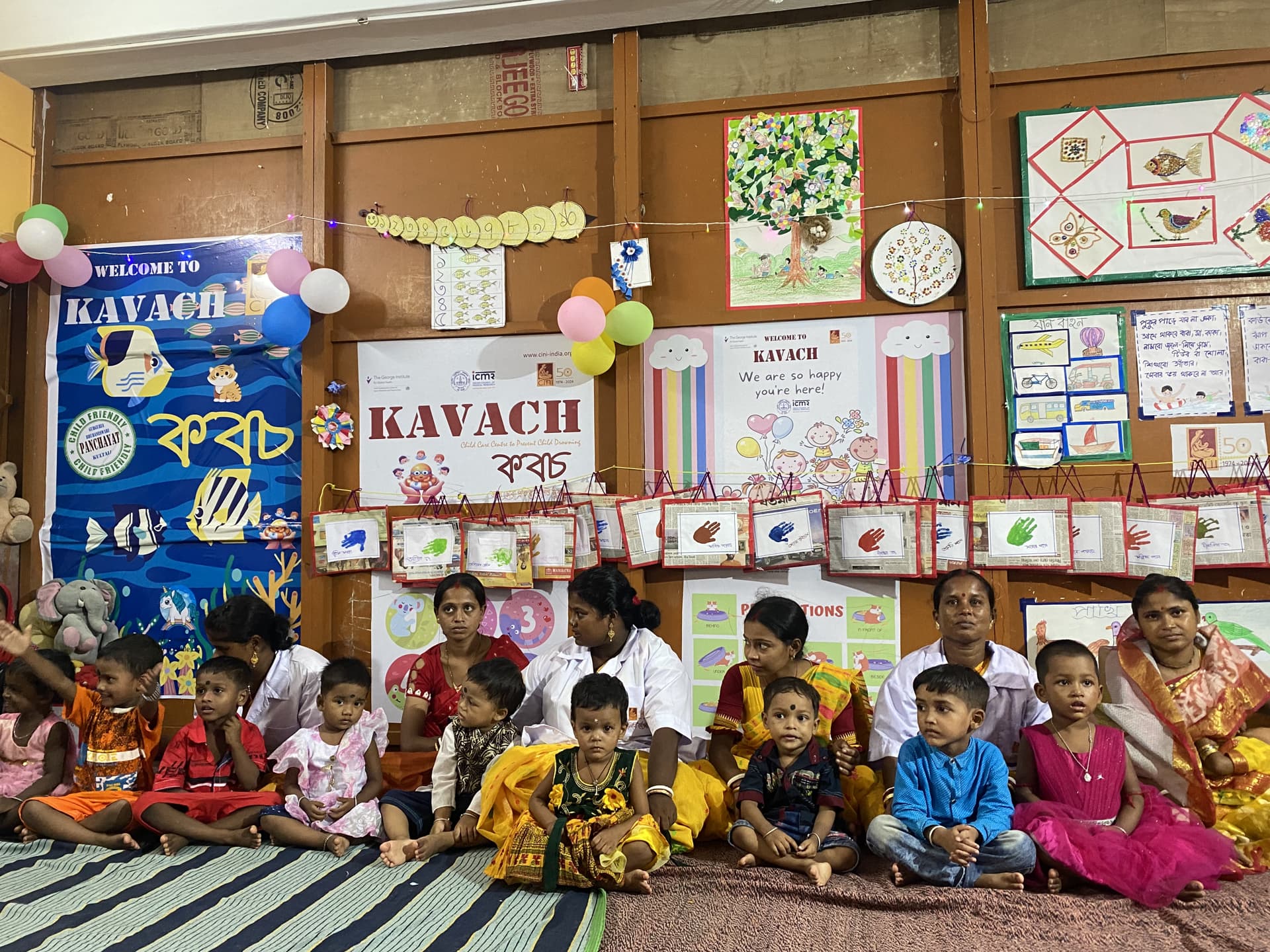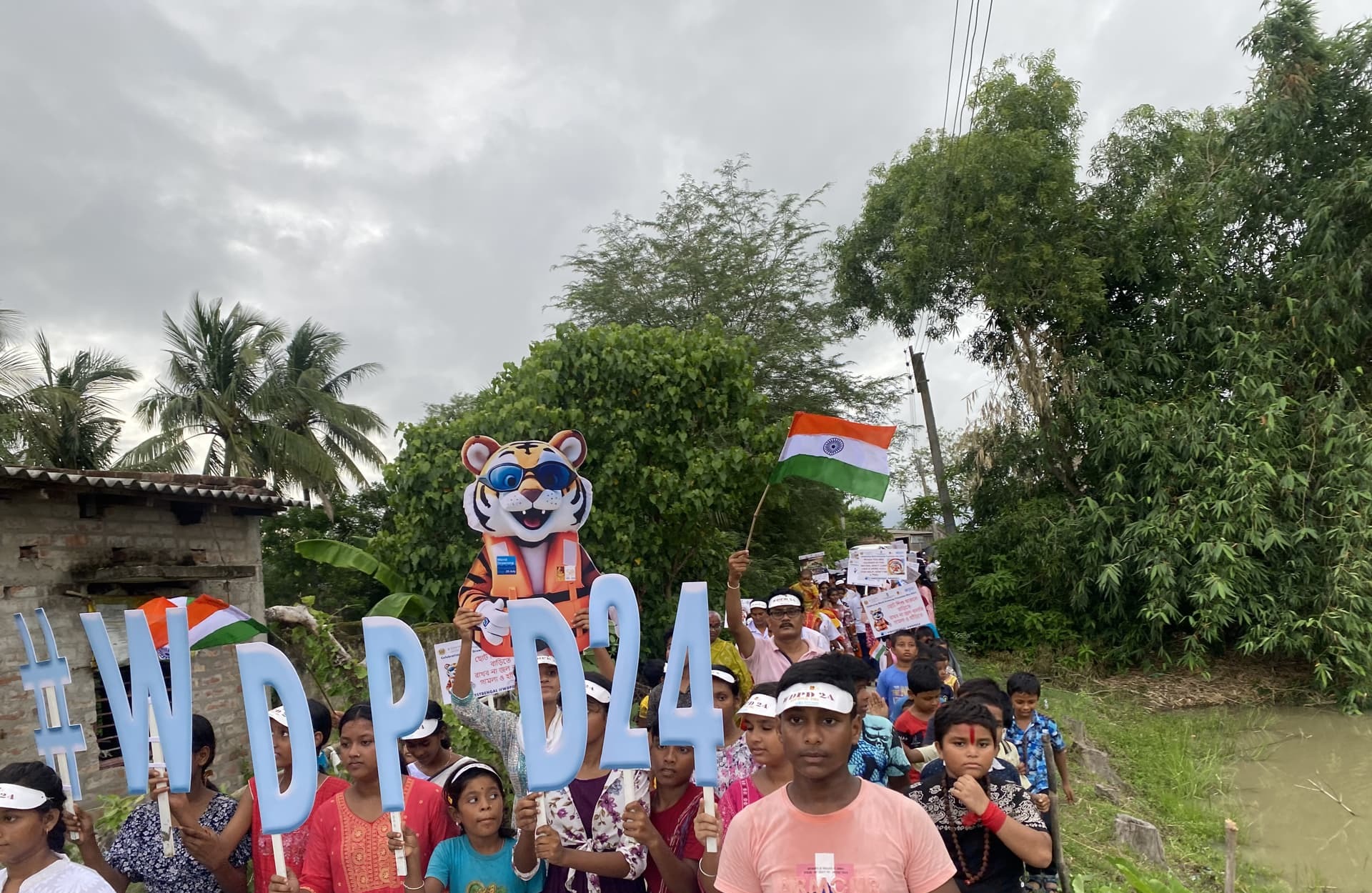Drowning is one of the leading causes of death globally for children and young people aged 1-24 years. Every year, an estimated 236 000 people drown. More than 90% of drowning deaths occur in low- and middle-income countries, with children under the age of five being at highest risk.
Most of these deaths are preventable.
Death by drowning is frequently linked to routine activities, such as bathing, collecting water for domestic use, travelling over water bodies in boats and ferries, and fishing. Both seasonal and extreme weather events, including flooding in the monsoons, can create conditions that lead to increased risk of drowning. Consequently, community engagement and empowerment become a strong component of multisectoral action for drowning prevention. Creating a ground movement where stakeholders understand their roles is critical to drowning prevention.
As part of on-ground call to action this year, WHO India, along with officials from central and state governments, academic institutions and NGOs, joined residents of Baikunthpur village in South 24 Parganas district, West Bengal in an event leading up to the World Drowning Prevention Day observed on 25 July.

A creche in Baikunthpur village in South 24 Parganas district, West Bengal, run by the non-profit, Child in Need Institute (Rina Sinha / © WHO India)
The villages in the Sunderbans region in the Ganga-Brahmaputra delta, have several fresh and saltwater ponds in close proximity of homes, posing an increased risk of drowning. Dr Samir Chaudhuri, founder of the non-profit Child in Need Institute (CINI), said that the Kavach centre, offers a safe space for mothers to drop-off their children while they work. The NGO is also supporting pond-based pools to teach children swimming and water safety measures.
A pond-based swimming pool next to the village creche was inaugurated to teach children how to swim and stay safe around water. Children were taught to swim and enacted a play to recreate drowning scenarios and present ways avoid risks to prevent it. Around 500 children joined adults, block-level administration and frontline health workers including ASHAs, to raise awareness around the village. Key stakeholders, including representatives from national and state government, civil society, academia and the community, held a meeting the next day to identify scaling low-cost models to prevent drowning deaths.

A rally by over 500 children in Bhuwaneshwari village in the South 24 Paraganas district of West Bengal on the occasion of World Drowning Prevention Day (Rina Sinha / © WHO India)
The activities demonstrated the need for expansion of best practices being implemented in the Sundarbans region of West Bengal to reduce the burden of drowning deaths and were based on the WHO guidelines and national strategies for drowning prevention. The event underscores the need for tailored outreach initiatives targeting vulnerable communities.Drowning is preventable through evidence-based, low-cost solutions, such as:
- installing barriers controlling access to water,
- providing children safe spaces away from water, such as in crèches,
- teaching swimming, water safety and safe rescue skills,
- training people in safe rescue and resuscitation,
- setting and enforcing safe boating, shipping and ferry regulations, and
- improving flood risk management.
Drowning prevention requires collective action to adopt and implement life-saving solutions to prevent it. Everyone has a role to play. Each of us must play our part.
